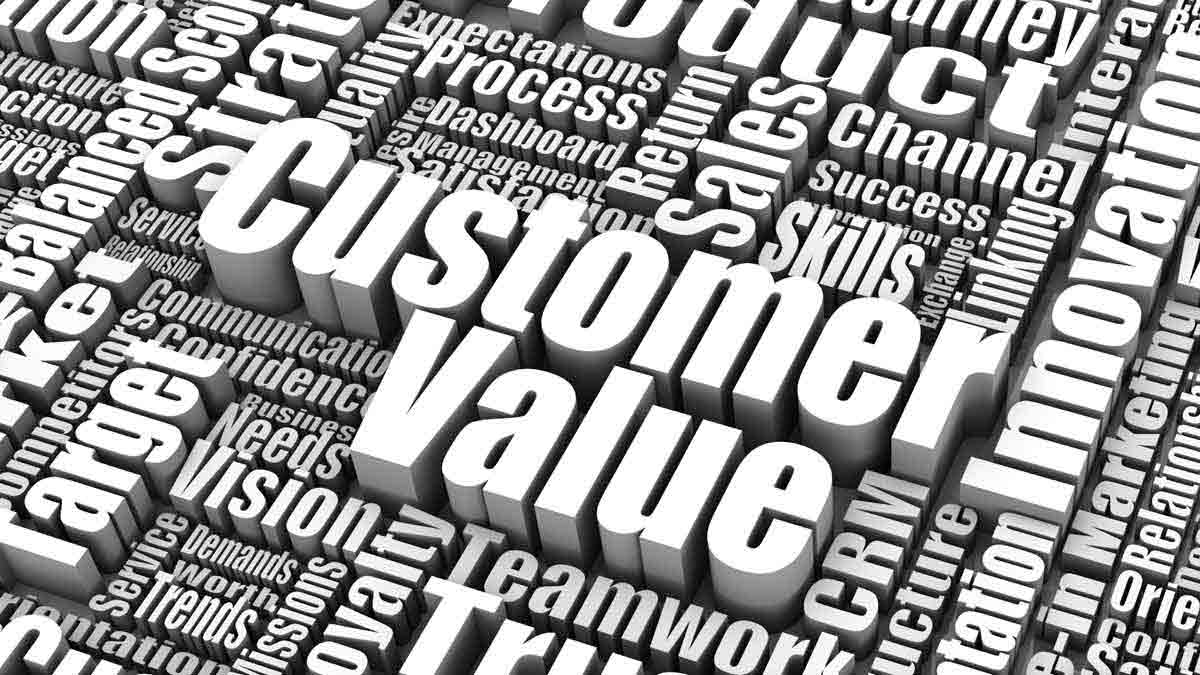Most companies know they should be interviewing customers to understand their needs. But how many have changed behavior? Are most of your new-product teams out there doing great interviews when no one is looking? The knowing-doing gap is the corporate version of the New Year’s resolution, with results just as impressive.
More in article, Where New Product Ideas Begin (Originally published in B2B Organic Growth newsletter).
Nothing you do within your operation will achieve such growth, unless customer value is also created. With operational efficiency alone, you’re in a race to the bottom. Quality and productivity improvements are important… but in isolation eventually lead to commoditization, as you and competitors approach a point of diminishing returns.
More in white paper, Catch the Innovation Wave (page 9).
If your new product development process does not require customer interviews today, consider two questions: 1) Do I have competitors beating me to the new product punch because they are using such interviews to uncover market needs? 2) Could I leapfrog them by building a company-wide competency of B2B-optimized interviews?
More in article, B2B Customer Interviews: Are They Different?
Those wrong places are usually inside your company. In a study examining best idea sources, 8 voice-of-customer methods and 10 other methods were examined. In terms of effectiveness, the VOC methods took 8 of the 9 top spots. At the very top? Customer visit teams and customer observation. Most companies need to “get out” more.
More in article, Where New Product Ideas Begin (Originally published in B2B Organic Growth).
With a high-certainty product project, you can accurately predict your financial profits. With an uncertain project, you face significant potential downside and upside profits. In B2B markets, you can understand the downside very early. You’ll kill the project cheaply if the downside cannot be eliminated. And reap big upside profits if it can.
You can methodically strip away uncertainty and de-risk your projects. This is done through a four-step process that combines Discovery-Driven Planning with New Product Blueprinting. Learn more in this white paper, Innovating in Unfamiliar Markets (page 5).
You have to deliver important value that customers cannot get anywhere else to command a higher price. If customers can get this same value from just one other supplier, they’ll use it as leverage for lower pricing. So the difference between delivering new value and matching existing value is the difference between raising and lowering market pricing.
Download our Free white paper to discover how the Innovation Wave will differ from earlier Quality and Productivity Waves. Catch the Innovation Wave (page 8).
Many suppliers ask “low-lumen” questions that neither illuminate nor engage customers. They may be biased, close-ended or too complex. Beware requesting sensitive information, or asking, “What would you pay for this?” When you ask for problems, don’t try to “help” with examples. Instead, let the customer choose the next topic to discuss.
Read more in article, Lean Startup: A Great Approach Requiring “B2B Pre-Work” (Originally published in B2B Organic Growth.) Lean Startup wisely recommends testing assumptions and learning from customers at the first opportunity. For most B2B suppliers, this “first opportunity” to learn comes before a prototype is created – through early voice-of-customer interviews that mine the insight and foresight of highly-knowledgeable customers.
Three conditions must be met: 1) A market segment (cluster of customers with similar needs) is clearly defined. 2) The segment is worth winning in terms of size, growth, profit potential, etc. 3) The segment is winnable, i.e., it’s not defended by a well-entrenched competitor. Overlook these conditions and you’ll waste resources.
Read more in article, B2B Customer Interviews: Are They Different? (Originally published in B2B Organic Growth.) If you are using a one-size-fits-all VOC interviews for industrial goods that others use for consumer goods, you’re sub-optimizing. Collaboration, pre-selling and value capture are wonderful goals, but to reach them you’ll need new approaches.
Could customers help with a product as radical as iTunes or iPod? Sure. If you know how to ask. They’d probably be hopeless on solutions… but helpful on outcomes: access a broad range of music, instantly purchase music, transport music anywhere, purchase single tunes, store music on multiple devices, etc. These would be great insights for any solution-provider.
Read more in this article, Should You Develop New Products like Steve Jobs? (Originally published in B2B Organic Growth). Steve Jobs made a good point when he said “you can’t just ask customers for the next big thing.” The customers’ area of expertise is the “outcome”—what they want to have happen, not how it should happen.
If you don’t ask customers the right questions, you can’t quantitatively assess their next best alternative. So you’ll have to guess at pricing. Guess too high and customers won’t buy. Guess too low and… well, customers will let it go this time. And you leave money on the table, perhaps for a decade or more.
Read more in this free white paper, Catch the Innovation Wave (page 12), which details how your company can improve customer value and experience a significant increase in sustainable organic growth.
When you give customers a value calculator with hard numbers, you are much more credible and you build their confidence in your new product. And you boost customer “internal selling.” If your unit price is higher than competitors’, you can help your customer purchasing agent prove he’s a hero, not a goat.
Read more in article, Getting Top Price for Your New Product (Originally published in B2B Organic Growth) Resist the temptation to ask a customer, “What would you pay for this?” There’s a little alarm that sounds in the customer’s head saying you’ve stopped trying to help him, and are now trying to help yourself.
Think of a great radio interview. Did the host say, “I have 10 questions about your book”? Or did he listen carefully, asking wonderful questions? Did these questions cause the guest to think deeply? Did the guest enjoy the stimulating exchange, even thanking the host? This is how you learn what competitors miss.
Read this article, Should You Develop New Products like Steve Jobs? (Originally published in B2B Organic Growth). Have you ever heard someone say, “But Steve Jobs didn’t ask customers what they wanted.” Understand the flaws in this thinking for B2B suppliers.
You can have an intelligent, peer-to-peer conversation about pressure ratings, fluid specifications, etc. You can expect greater B2B interest vs. B2C, since your innovations can help the hydraulics engineer become a hero with his next new product. Without innovative suppliers like you, his path to recognition is a difficult one.
Read this article, B2B Customer Interviews: Are They Different? to learn why you are severely under-optimizing if you are a B2B supplier using one-size-fits all VOC… that others use for consumer goods.
Sure, you can develop products that you find exciting. But unless these products address something customers find important and unsatisfied, don’t expect them to buy them. And if customers do buy your product, they certainly won’t pay a premium. If you’re not happy about this, you’ll have to complain to Adam Smith.
More in white paper, Catch the Innovation Wave (page 8).













